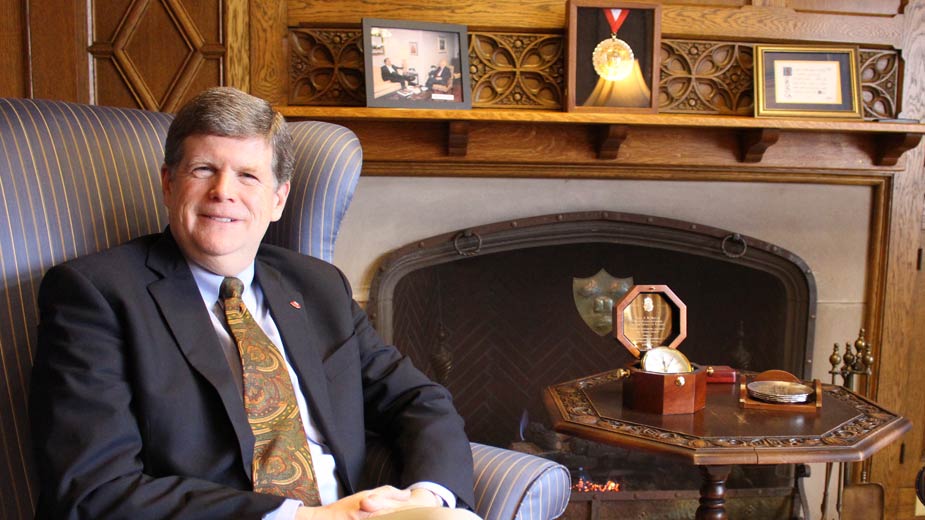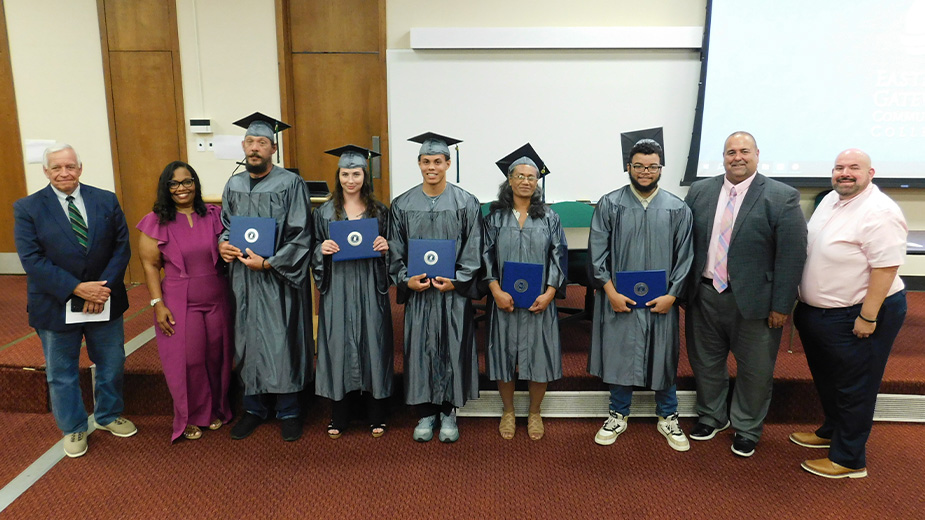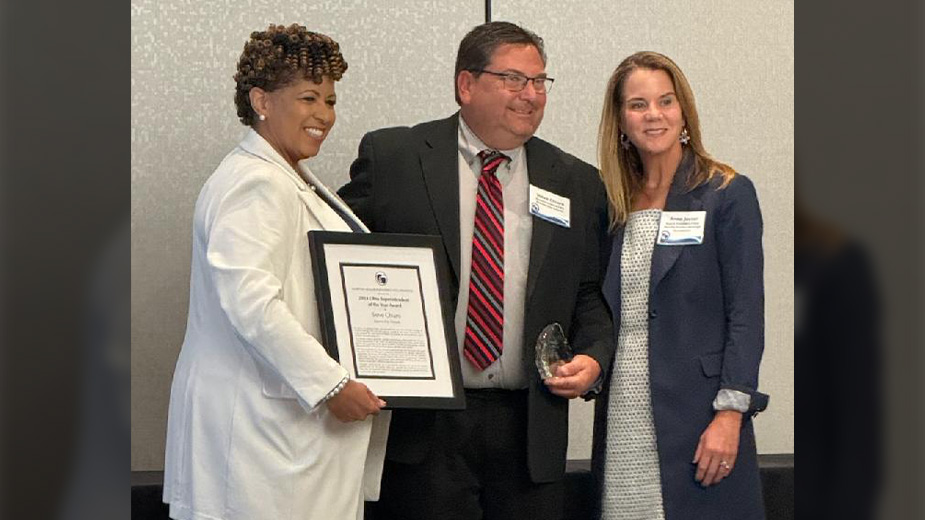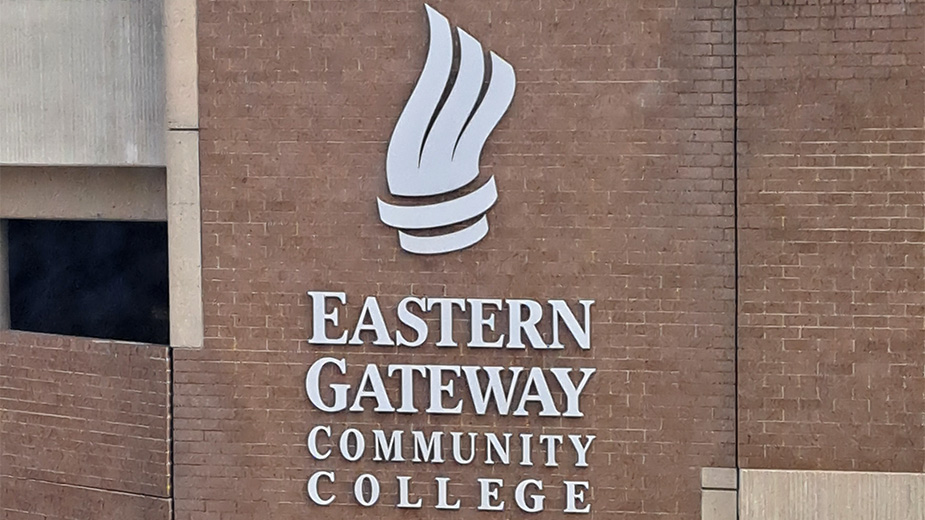Grove City College Keeps Faith with Its Principles
GROVE CITY, Pa. — The campus in rural southeastern Mercer County, Pa., looks exactly as Hollywood would build a set to shoot a movie about college life. Collegiate Gothic architecture – large red-brick buildings punctuated with white stone arches, huge windows and tall oak doors – is set on 180 acres of green space with Wolf Creek cutting through.
Beyond looking like the setting of college life, Grove City College is the home of an academically rigorous program that draws 2,506 students from 40 states and abroad.
The average student, says college President Paul J. McNulty, earned a high school GPA of 3.73 and achieved an SAT score of 1212 or an ACT score of 27. More important, some 94% remain through four years. Of the 78% who graduate within four years, 96% either have jobs or go on to graduate school. Eighty-three percent graduate within six years.
Those who enter the workforce immediately take jobs that on average pay $48,800 to start, reports PayScale.com, and advance to an average mid-career compensation of $84,700 annually. PayScale identifies Grove City one of the top 10 “Best Value Liberal Arts Colleges.”
Because of its academic program – 50 majors in the humanities, sciences and arts plus 30 minors – and comparatively low tuition, Grove City bills itself as a “college that pays you back.” It cites this year’s Princeton Review report, “Colleges that Pay You Back: The 200 Best Value Colleges and What It Takes to Get In,” and a host of other publications that include Forbes magazine and U.S. News & World Report.
The Princeton Review, says a college spokesman, credits Grove City with offering “stellar academics, affordable costs and strong career prospects for graduates.”
Just as important as the academic demands placed on the students is how they learn, McNulty says, to wit, in a Christian environment. “We are as committed to our Christian heritage as when we were founded 140 years ago [1876],” the college’s ninth president says.
McNulty describes the Christianity professed as “undenominational.” While the college requires each student to complete 18 chapel credits each semester, it does not mandate that the time be spent in Harbison Chapel or even that a student be Christian.
The dean of its Calderwood School of Arts and Letters, David Ayers, tells of having met at length with students who are Jews, Sikhs and nonbelievers, their discussions held with mutual respect.
The dean of the Hopeman School of Science, Engineering and Mathematics, Stacy G. Birmingham, agrees that there’s no Christian version of physics, chemistry, engineering or computer science. Grove City teaches the ethics of how those disciplines should serve humanity, she says, along with the disciplines themselves.
“As an engineer, my belief is we’re here to serve humanity,” she says. “How do we serve marginalized populations?”
Birmingham and her husband, William, chairman of the computer science and electrical engineering department, gave up tenured positions at the University of Michigan to come to Grove City, which does not grant tenure. (McNulty noted that each year all faculty are extended one-year contracts.)
“We have students and faculty from all faith traditions,” Stacy Birmingham says. “There is no statement of faith that faculty must sign” as is the case at most Christian private colleges.
In science courses, “We have students who believe in the six days of creation” as described in the Book of Genesis, Birmingham says. “That leads to some interesting discussions.”
Beside ethics in engineering, she teaches freshman classes such as introduction to engineering and introduction to mechanical engineering.
Grove City is known for the legal case, Grove City College v. Bell that reached the U.S. Supreme Court and was decided in 1984. The court decided mostly in favor of the college, McNulty says.
As Jimmy Carter’s secretary of education, Terrell H. Bell oversaw efforts to have all colleges and universities that receive federal funding, whether directly or indirectly, comply with Title IX, passed in 1972. Charles MacKenzie, then president of the college, refused to sign off because, McNulty explains, it would have made the college subject to future revisions to Title IX.
The college was, and remains, in full compliance with all civil rights laws, he emphasizes, and agrees fully with the intent of Title IX.
In an effort to retain its autonomy, in 1979 the college informed the Department of Education it would not accept state or federal funding. But the government, however, said because many of its students accepted federal grants to pay for their tuition, it had to sign an assurance of compliance.
Grove City would not and the Department of Education cut off the financial help it provided the students. The college filed suit in federal court in Pittsburgh, which decided in its favor. The government appealed and won, causing the college to take its case to the Supreme Court.
On the steps of the Supreme Court, the day the justices heard oral arguments, MacKenzie said, “Little Grove City feels like David confronting Goliath as its challenges the government bureaucracy. It’s fighting for everyone’s freedoms and not merely its own.”
Goliath won. The court ruled that because students received financial aid, however indirectly, the financial aid program Grove City College had set up made it subject to Title IX and dismissed its argument that it infringed on its First Amendment rights. The college did not have to sign that it complied with Title IX. But the court also ruled that Title IX applied only to its financial aid department and not the college as a whole. It could not enroll students whose tuition was subsidized by federal grants or loans or guarantee loans.
The government’s victory became moot because three years later Congress passed the Civil Rights Restoration Act.
To this day, Grove City and Hillsdale College in southeastern Michigan, another nonsectarian liberal arts college acclaimed for its academic rigor, do not allow students to pay for their tuition with federally insured Stafford Loans, Pell Grants or to use the G.I. Bill.
Nor does either accept federal or state research grants.
Both colleges are well-financed with private donations, Grove City boasting an endowment of $111.61 million. “Our endowment goes almost entirely to financial aid,” Birmingham says.
A key difference is that where Hillsdale lists its tuition, room and board at $35,722, Grove City charges tuition of $16,630 – which McNulty stresses, “We don’t discount” – and another $9,062 for room and board. The average discount at private colleges and universities, he says, is 50%.
Sixty percent of the student body receives financial help, the average being $5,000 per student, and that assistance is based on need and academic merit. The loans the college financial aid office extends have “a nearly zero default rate,” McNulty says.
Fifty-one percent of the student body is male and 30% of the students belong to a social fraternity or sorority, but none is affiliated with a national Greek-letter organization. Opportunities for a rich social and spiritual life abound, McNulty says, with 150 students clubs and organizations that include “a marching band of 170 pieces.”
Faculty number 150, 80% holding a Ph.D. or Sci.D., and the student-faculty ratio is 13:1.
Small classes and easy access to professors whose emphasis is more on teaching than research have resulted in an environment conducive to learning, the president says. Faculty teach four classes each semester and keep longer office hours than their counterparts at other colleges and universities.
“Teaching is still the best part of my day,” says Ayers, the Arts and Letters dean.
In his school, “our professors are amazingly among the lowest-tech teachers there are,” he says, because they strive to engage with their students in the classroom. “We’re using the same technology to discuss the same problems” whose origins can be traced to Classical Antiquity.
Of the Grove City faculty, Ayers says, “We all love teaching.”
Helping the professors improve their pedagogy, the dean says, are “Our students who are good at providing us with honest evaluations.” Students have become more demanding, he’s found.
All evaluations are submitted anonymously, Ayers says, but students don’t use that as license to criticize unfairly.
Students are encouraged to work in teams, Birmingham says. “We press the issue of engagement with their fellow students,” she says. “Students talk to each other, not on their cellphones.”
It’s common to see engineering and science students in the new science building working together in halls, Birmingham says, writing out and solving problems on the walls.
Each student is expected to leave with a thorough grounding in the humanities, the president and deans say. All must take the basic 18 hours in those subjects.
Ayers stresses the Christian viewpoint incorporated in all subjects taught at Grove City. “I integrate my faith [in my classes] naturally,” he says.
The college was founded in Grove City because in 1876 it was a stop on the railroad that linked Pittsburgh and Erie, McNulty says. Railroad companies were required to offer passenger service and that made it possible for the college in its early years to draw the bulk of its students from Pittsburgh.
Today Interstate 79 links the second- and third-largest cities in Pennsylvania, and I-80 is close as well, allowing easy access to the campus.
Pictured: Paul J. McNulty, president of Grove City College.
Copyright 2024 The Business Journal, Youngstown, Ohio.



